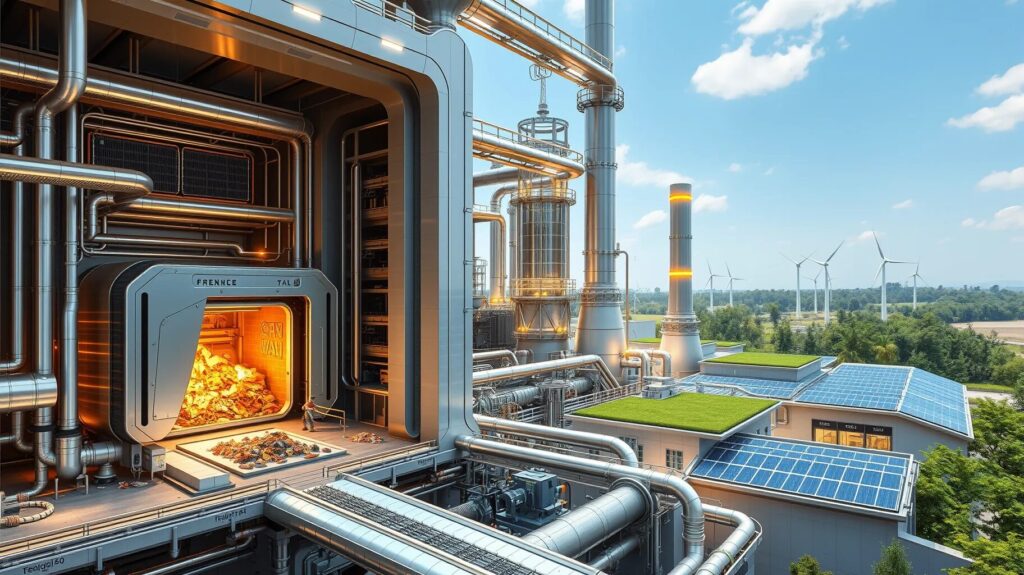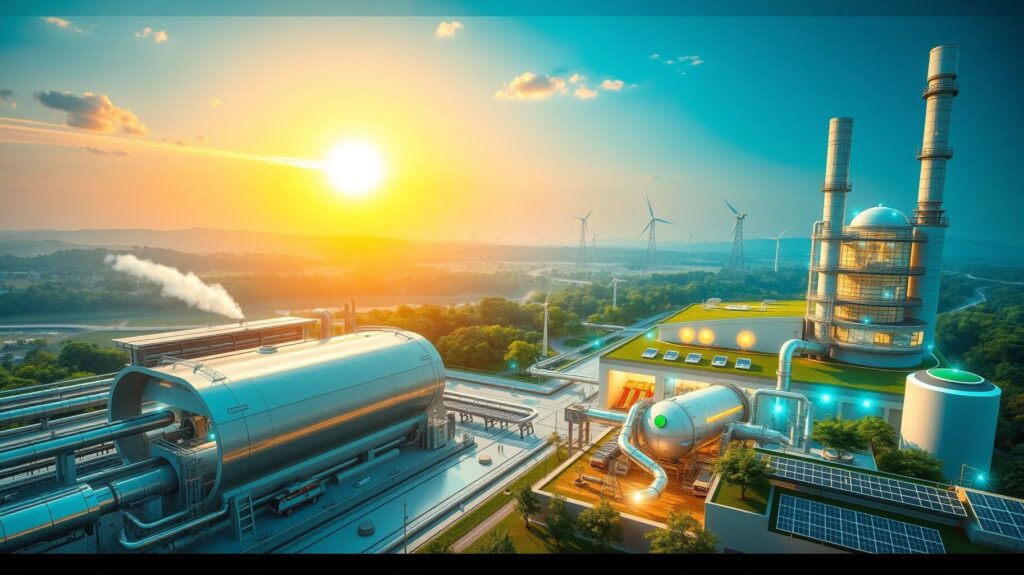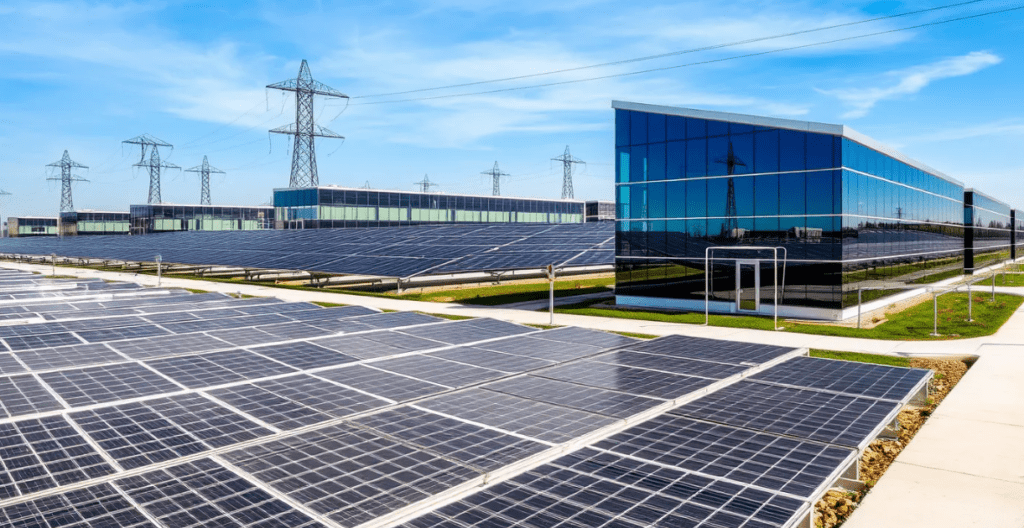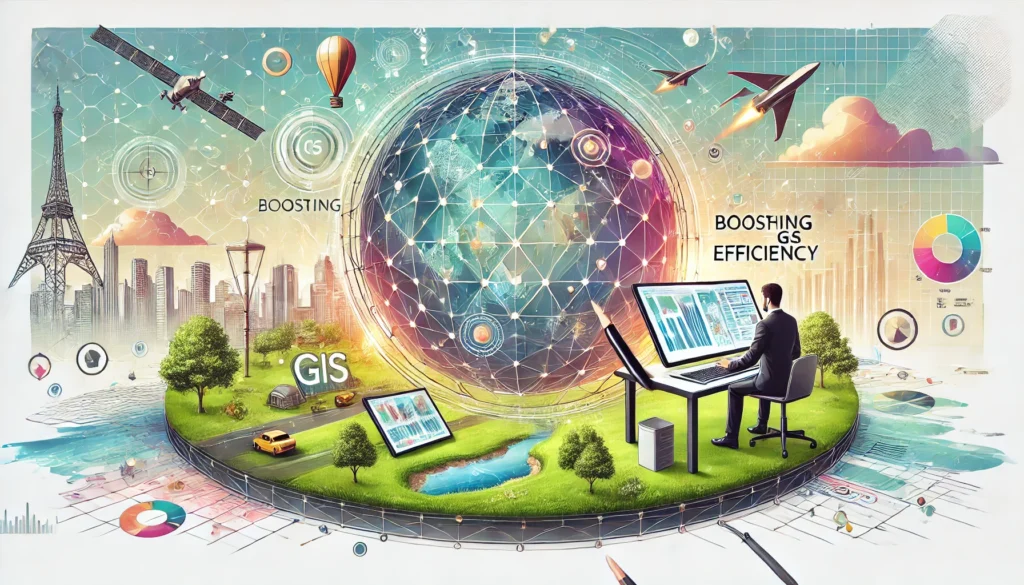
As global awareness of climate change intensifies, industries are under mounting pressure to adopt more sustainable practices. One area receiving particular attention is the waste-to-energy (WtE) sector. While converting waste into energy is an innovative way to reduce landfill waste and produce renewable energy, it’s not without its challenges—particularly the emission of harmful pollutants during the process.
As we grapple with rising levels of waste and the need for renewable energy, AI-based systems are offering innovative solutions. These advanced technologies are taking waste sorting to the next level, ensuring that materials are identified correctly and sent to the proper channels for energy conversion. The result? A cleaner, more efficient process that minimizes landfill use while boosting energy production.
The Challenge of Emissions in Waste-to-Energy
Although waste-to-energy plants are an important alternative to traditional waste disposal, they do produce emissions. These emissions, including carbon dioxide (CO2), nitrogen oxides (NOx), and volatile organic compounds (VOCs), contribute to air pollution and climate change. The challenge is in reducing these emissions while still generating energy from waste, a process that often requires burning or chemically converting the waste materials.
Traditional waste-to-energy facilities are often constrained by inefficiencies in sorting waste, managing contaminants, and ensuring proper combustion. Poorly sorted or contaminated waste can lead to incomplete combustion, which not only reduces energy output but also increases the release of harmful emissions.
AI-Enhanced Waste Sorting to Reduce Emissions
A key advantage of AI technology in waste-to-energy plants is its ability to improve waste sorting, leading to cleaner and more efficient energy production. By utilizing machine learning and computer vision, AI systems can accurately identify and sort different types of waste, separating out materials that could lead to higher emissions if not properly processed.
For example, when organic waste is mixed with plastics or hazardous materials, the combustion process can release toxic substances into the atmosphere. AI-driven sorting technologies can detect and remove these contaminants before they reach the incineration stage, resulting in cleaner combustion and significantly lower emissions.
Furthermore, AI systems are continuously learning and improving, which means that over time, their accuracy in identifying and sorting waste materials only gets better. This not only boosts the efficiency of energy production but also reduces the environmental impact of emissions.
Optimizing Combustion Processes with AI

Beyond sorting, AI is also being applied directly to the combustion process itself. Waste-to-energy plants are often challenged by fluctuating waste composition, which can lead to inefficient burning and increased emissions. AI systems can help optimize this by continuously monitoring and adjusting the combustion process in real-time.
By analyzing data from sensors inside incinerators, AI algorithms can fine-tune the combustion environment—controlling factors like temperature, oxygen levels, and feed rates to ensure that waste burns as completely and cleanly as possible. This not only maximizes energy output but also minimizes the production of harmful byproducts like dioxins and furans.
In some facilities, AI is even being used to model and predict the behavior of different waste streams, allowing operators to adjust the process ahead of time to optimize energy production and emission control.
AI-Powered Emission Monitoring and Control
One of the most promising uses of AI in waste-to-energy processes is its ability to monitor emissions in real-time and make automatic adjustments to keep levels within regulatory limits. AI-powered emission control systems can track the concentration of harmful gases like carbon monoxide (CO), sulfur dioxide (SO2), and NOx as waste is being incinerated. When levels begin to rise, the AI system can immediately adjust the combustion parameters or activate filtration systems to reduce emissions.
This real-time adaptability is crucial for staying compliant with strict environmental regulations, especially in regions where waste-to-energy plants must meet specific emission targets. With AI’s ability to rapidly process large amounts of data, waste-to-energy plants can respond to emission fluctuations faster and more accurately than traditional systems.
Predictive Maintenance to Enhance Efficiency
AI also contributes to reducing emissions by optimizing plant efficiency through predictive maintenance. By continuously monitoring the health of equipment, AI can predict when machinery, such as boilers or turbines, is about to fail or operate less efficiently. This helps plants maintain optimal performance, minimizing unplanned downtime and ensuring consistent, clean energy production.
When equipment is operating at its best, it burns waste more efficiently, resulting in fewer emissions and more energy output. AI’s ability to anticipate maintenance needs also extends the lifespan of equipment, leading to long-term environmental benefits through reduced waste and energy consumption in the manufacturing of new parts.
AI and Carbon Capture Integration

A rapidly developing area of AI in waste-to-energy is its integration with carbon capture technologies. Carbon capture, utilization, and storage (CCUS) is a technique used to trap CO2 emissions before they are released into the atmosphere, allowing for the potential reuse of CO2 in other industrial processes or storage underground.
AI can optimize this process by predicting when and how much CO2 will be emitted, allowing capture systems to operate more efficiently. By controlling the timing and capacity of carbon capture processes, AI ensures that CO2 emissions are minimized without significantly impacting the energy conversion process. This not only reduces the carbon footprint of waste-to-energy plants but also offers a potential pathway to carbon-neutral or even carbon-negative energy production.
The latest advancements in AI for waste-to-energy (WtE) processes focus on efficiency, emission reduction, and operational optimization:
- AI-Enhanced Waste Sorting: AI-driven robots and vision systems are increasingly used in waste sorting, identifying and separating materials more accurately than manual methods. This reduces contaminants entering the combustion stage, minimizing toxic emissions and improving the energy output of waste-to-energy facilities.
- Optimization of Biogas Production: AI is playing a pivotal role in optimizing anaerobic digestion, a process that turns organic waste into biogas. AI monitors and adjusts parameters like temperature, pH, and feed composition, ensuring maximum biogas yields by creating the optimal conditions for microbial activity.
- Real-Time Emission Monitoring: AI-powered systems are being deployed to monitor emissions during the WtE process. By analyzing data from sensors, AI can make real-time adjustments to the combustion process to stay within emission standards while maintaining efficiency. This helps in reducing the release of harmful gases such as carbon dioxide, nitrogen oxides, and other pollutants.
- Predictive Maintenance and Process Optimization: AI models are being used to predict equipment failures before they happen, allowing for timely maintenance and ensuring that plants run at optimal efficiency. This reduces operational downtime and helps in maintaining consistent energy production while minimizing environmental impacts.
- Smart Waste Collection Systems: AI is also being integrated into smart bin systems and waste collection routes, where sensors detect waste levels in bins and optimize collection schedules. This reduces unnecessary trips, cuts down on fuel consumption, and minimizes carbon emissions from waste collection trucks.
The Future of AI in Emission Reduction
As AI technology continues to evolve, its role in reducing emissions from waste-to-energy processes will only grow more sophisticated. In the future, we can expect AI systems to handle increasingly complex tasks, such as integrating renewable energy sources into waste-to-energy plants or even designing new waste conversion technologies that are inherently low-emission.
Moreover, as more data becomes available, AI systems will be able to make smarter, more predictive decisions, helping waste-to-energy plants become more sustainable and eco-friendly. These advances hold immense potential for making waste-to-energy a cleaner and more widely accepted method of energy generation.
Case Studies: AI in Action
Around the world, several businesses and governments are already leveraging AI to improve their waste management practices. In places like Norway, Japan, and parts of the U.S., AI systems are integrated into smart recycling and energy conversion plants. These AI-equipped facilities are not only reducing the cost of waste management but also helping to meet sustainability goals by increasing efficiency in waste sorting.
One notable example comes from Waste Robotics, a Canadian company that uses AI-powered robots to sort through recycling materials at unprecedented speeds. These robots use sophisticated sensors and deep learning algorithms to identify different types of waste and ensure that they are processed accordingly. Their success has encouraged other companies and municipalities to follow suit.
AI and the Circular Economy
Beyond waste-to-energy, AI is playing a critical role in driving the circular economy, where resources are kept in use for as long as possible. By ensuring that materials are sorted correctly and efficiently, AI can help industries reuse valuable resources rather than letting them go to waste. This feeds into the circular economy model, where waste becomes a resource, reducing the need for virgin materials and minimizing overall environmental impact.
When AI assists in diverting materials to recycling, composting, or energy conversion facilities, it closes the loop on resource consumption and contributes to a sustainable future. By extending the life cycle of products and materials, the environmental benefits multiply.
Addressing Challenges: Integrating AI with Existing Systems
While the benefits of AI-driven waste sorting are clear, there are some challenges to consider when it comes to integration with existing systems. Many waste management facilities are still using older technologies or manual labor, and the shift to AI requires investment in new infrastructure. However, as the technology becomes more accessible and affordable, the upfront costs can be quickly offset by long-term savings and environmental gains.
There’s also the challenge of training AI systems to work effectively across different waste streams. Not every facility deals with the same type of waste, and AI algorithms need to be tailored accordingly. This requires ongoing training and data collection, but as AI improves, these challenges are becoming easier to manage.
Future Prospects of AI in Waste-to-Energy Conversion
Looking ahead, the future of AI-driven waste sorting and energy conversion looks bright. As AI technology continues to evolve, we can expect even more sophisticated sorting systems that not only handle larger volumes but also differentiate between more complex materials. With the integration of robotic automation, smart sensors, and real-time data analytics, waste sorting will become a seamless, efficient, and highly effective process.
Moreover, the potential to integrate AI waste management systems with smart cities infrastructure opens the door to real-time tracking and optimization. Cities could eventually use data from AI systems to manage waste more dynamically, adjusting collection routes, sorting practices, and energy conversion processes based on real-time demand.
Conclusion: A Cleaner, Greener Future
The combination of AI technology with waste-to-energy conversion represents a promising solution to one of the planet’s most pressing problems: waste management. By improving sorting accuracy, reducing contamination, and optimizing energy yields, AI is driving a more sustainable and efficient future.
As more businesses and governments adopt AI-driven optimization in waste sorting, the world can move closer to a future where waste becomes a resource, not a problem. It’s a shift that not only benefits our environment but also offers economic opportunities for industries invested in sustainability. Through AI, we’re unlocking smarter ways to handle waste, conserve resources, and generate energy, pushing us one step closer to a cleaner, greener world.
Research Papers and Articles
- “Artificial Intelligence in Waste Management” – A research paper discussing how AI is being integrated into waste management processes to improve sorting efficiency, reduce emissions, and enhance recycling efforts.
- Available at: ResearchGate
- “AI and Machine Learning in Waste-to-Energy Systems” – This article examines the use of AI and machine learning to optimize waste-to-energy plants, including real-time monitoring and predictive analytics for combustion control and emission reductions.
- Available at: ScienceDirect
- “AI-Driven Waste Sorting for a Circular Economy” – A report from the Ellen MacArthur Foundation that highlights AI’s contribution to enhancing waste sorting in circular economy initiatives, with a focus on reducing emissions and resource consumption.
- Available at: EllenMacArthurFoundation.org
Industry Reports
- International Solid Waste Association (ISWA) Report on AI and Waste-to-Energy – This comprehensive report details the application of AI in global waste-to-energy plants, focusing on emission reductions and improving overall plant efficiency.
- Available at: ISWA.org
- “The Role of AI in Enhancing Waste-to-Energy Technologies” by the World Economic Forum – A forward-looking analysis on how AI is reshaping the waste-to-energy industry, emphasizing sustainability and emissions reduction.
- Available at: WorldEconomicForum.org
- Waste Robotics Case Study – A case study on Waste Robotics’ use of AI-driven robots to improve waste sorting and reduce emissions in waste-to-energy processes.
- Available at: WasteRobotics.com
Government and Policy Resources
- EPA’s Guide to Emission Control Technologies in Waste-to-Energy Plants – A resource from the U.S. Environmental Protection Agency (EPA) on the latest emission control technologies, including AI’s role in optimizing these systems.
- Available at: EPA.gov
- European Union’s Directive on Waste and Energy Efficiency – An EU publication on the regulation of waste-to-energy plants and how AI technologies are helping to meet stricter emission standards.
- Available at: Europa.eu
Industry Innovations and AI Platforms
- Copenhill Plant, Denmark – A world-renowned waste-to-energy plant that uses AI-driven technologies to monitor emissions and optimize waste sorting. Case studies and tech details can be explored further.
- Available at: Copenhill.dk
- DeepMind’s Collaboration with Waste-to-Energy Plants – Google’s DeepMind AI is being integrated into WtE facilities to reduce emissions and enhance predictive maintenance systems.
- Available at: DeepMind.com





